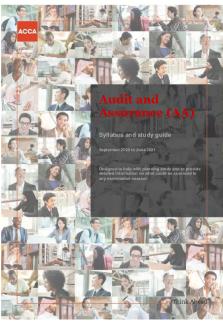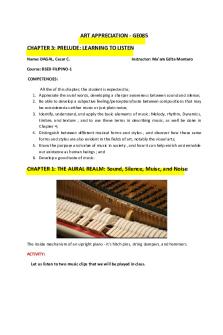178bfdfc 5bc5d695e61ec056b07534 aa PDF

| Title | 178bfdfc 5bc5d695e61ec056b07534 aa |
|---|---|
| Course | Information Technology |
| Institution | Surigao State College of Technology |
| Pages | 13 |
| File Size | 848.9 KB |
| File Type | |
| Total Downloads | 102 |
| Total Views | 197 |
Summary
PROGRAM OUTCOMES:In pursuance of the above-stated mission, the objectives of the College of Information Technology are as follows: Apply knowledge of computing, theories, fundamentals, models, mathematics and science appropriate to the discipline. Analyze a problem, identify and define the need and ...
Description
2 Module 4- POPULAR AND MODERN DANCES
PROGRAM OUTCOMES: In pursuance of the above-stated mission, the objectives of the College of Information Technology are as follows: 1. Apply knowledge of computing, theories, fundamentals, models, mathematics and science appropriate to the discipline. 2. Analyze a problem, identify and define the need and user requirements appropriate to its solution. 3. Design, implement and evaluate a computer-based system, process, component or program to meet desired needs. 4. Develop ideas and solutions with creativity and innovation with appropriate considerations to ethics, cultural, and environmental factors. 5. Analyze the local and global impact of technology on individuals, organizations and society. 6. Function effectively as a member or leader of a development team recognizing the different roles within a team to accomplish a common goal. 7. Assist in the creation of an effective project plan. 8. Recognize the legal, social, ethical and professional issues involved in the utilization of computer technology and be guided by the adoption of appropriate professional, ethical and legal practices. 9. Recognize the fast-paced demands of industry allowing him or her to formulate personal goals aligned to organizational goals in order to determine plans action to improve own performance, capability and self. Such goals allow the student to self-assess him/himself to determine his development needs. 10. Ability to effectively communicate and present the designed solutions with a range of audiences both in oral and in writing. 11. Apply current and appropriate techniques, skills and tools necessary for the IT profession.
COURSE TITLE
P.E. 2 - Rhythmic Activities
COURSE DESCRIPTION This course provides students with activities that will foster and develop appreciation and understanding of values and importance of rhythm. The individual will learn to respond physically, socially, and mentally to regular pattern with sounds; it helps facilitate faster earning and more complex rhythmic movements such as the mastery with basic movements exercise and in all types of dance.
COURSE LEARNING OUTCOMES At the end of the course, the students must have: 1.
integrate the value of camaraderie, passion, dedication to the program, commitment to self, love for dance, respect to one another, and discipline;
2. demonstrate a nuanced understanding of collaboration in the creative process through leadership, participation, and reflection; 3. develop a multifaceted physically through training in dance techniques; 4. apply a variety of value system, aesthetics, and approaches to performing.
3 Module 4- POPULAR AND MODERN DANCES
INTRODUCTION Most people dance simply to have fun or to entertain others. But dancing also serves many other purposes. For many people, dancing provides one of the most personal and effective means of communication. A dancer can express such feelings as joy, anger, or helplessness without saying a word. Many schools and private studios offer classes in modern dance. These classes encourage the students to express themselves through rhythmic movement. The field of dance therapy uses modern dance to treat physically handicapped and emotionally disturbed people. In many societies, dancing plays a role in courtship. It serves as a way for men and women to become acquainted before they marry. In most Western countries, secondary schools and university students get to know one another at dances.
MODULE LEARNING OUTCOMES In this module, you should be able to: 1. recognize popular and modern dance; 2. choose popular and modern dance; and 3. perform popular and modern dances.
POPULAR DANCES LESSON 1
SPECIFIC LEARNING OUTCOMES In this lesson, you are expected to: 1. recognize popular dance; 2. choose popular dance; and 3. perform popular dance. PRE- ASSESSMENT Instruction: Choose the letter of the correct answer. Write the letter of your choice before each number. 1. The basic beat of this dance consist of slow, slow, quick, slow, the last three beats corresponding to the non-sense syllable cha-cha-cha. a. Charleston
b. Cotillion
c. Cha-cha
d. Country-dance
2. In this dance two facing lines, one of men and the other of women, perform a great variety of movements derived from more specific dance types. a. Charleston
b. Cotillion
c. Cha-cha
d. Country-dance
3. In this dance the leading couple executed a variety of steps and figures to music of almost any type either in duple or triple meter, and the other dancers imitated these. a. Charleston b. Cotillion c. Cha-cha d. Country-dance
4 Module 4- POPULAR AND MODERN DANCES
4. Dancing in 2/4 meter, the dancers emphasize the first step with a traveling step, and then take art inwardbent knee-drag on two. a. Mambo
b. Rigaudon
c. Merengue
d. Rumba
5. The rumba is in square time, the rhythm frequently varying in every bar, and is characterized by syncopation and indefinite repetitions. a. Mambo
b. Rigaudon
c. Merengue
d. Rumba
LESSON MAP
POPULAR DANCES
Countrydance or Square Dance
Redowa
Cha-cha
Courante
Rigaudon
Charleston
Mambo
Rumba
Tango
Cotillion
Merengue
Samba
Waltz
The map above shows the different popular dances. CONTENT ENGAGE TAKE A LOOK! Instruction: What can you say about the picture below?
5 Module 4- POPULAR AND MODERN DANCES
______________________________________________________________________________________ ______________________________________________________________________________________ ______________________________________________________________________________________ ______________________________________________________________________________________ ______________________________________________________________________________________ ______________________________________________________________________________________
EXPLORE
READING TIME! POPULAR DANCES
Cha-Cha is a form of mambo to a rumba beat, originated by the Cuban Orchestra America (1953), developed by a group of orchestras called the Charangas
or
Orquestras
Danzoneras,
and
introduced to the United States by tourists. The basic beat consist of slow, slow, quick, slow, the last three beats corresponding to the non-sense syllable chacha-cha. The first cha-cha records were all labeled mambo.
The
rhythm
section
was
gradually
augmented. Dancers responded to the new slow rhythm by doubling time on the 4 and 1 count and by turning subtle hip movements intro three steps; it took four years until with the typical Cuban hip Sway. As with most Latin dances, the charm lies in subtlety ease rather than in intricacy.
Charleston, a modern social dance of the jitterbug variety, originated in Charleston, S.S. and, around 1925, conquered the dance halls all over the world. The rhythm is sharply accentuated,
the
dancers
place
special
emphasis on the syncopated upbeat. They twist the balls of their feet inward and outward, creating hazardous side steps comparable to those of the ancient galliards. The earliest composers
of
the
Charleston
were
North
America Negroes, like Cecil Mack and James P. Johnson, Erwin Schulhof introduced it into art music.
6 Module 4- POPULAR AND MODERN DANCES
Cotillion, a dance popular during the late eighteenth centuries, is named after the French word for petticoat, found in a then popular song. Originating in France, the cotillion spread to England and America, where it was danced at the close of a set of country-dances or, later, of quadrilles. The leading couple executed a variety of steps and figures to music of almost any type either in duple or triple meter, and the other dancers imitated these.
Country-dance or square dance is an English dance of folk like character originating in the seventeenth century. In the country-dance two facing lines, one of men and the other of women, perform a great variety of movements derived from more specific dance types. The word country was in France changed to contre, hence the German name Kontra-tanz, which, like the French, alters the original meaning, About 1685 the
country-dance
came
from
England
to
Netherlands and France, and from them on it became Europe’s favorite dance. At first the tunes of the country-dances resembled the English gigues, as shown by George Muffat’s Florilegium secundum (1698), but during the eighteenth and ```nineteenth centuries, the melodies acquired a marked dotted-eighth rhythm. Folk tunes and other popular melodies were adopted for the composition of contredanses. The best source of such tunes is John Playford’s The English Dancing Master (1651), which was followed by numerous works of similar content. Famous country-dances appear in Rameau’s Zoroastre and Mozart’s Don Giovanni. A French contredanse became the popular “Ca Ira” of the French Revolution.
7 Module 4- POPULAR AND MODERN DANCES
Courante is a dance in duple time at first pantomimic, originating in the sixteenth century. The
dance
is
mentioned
in
Arbeaus
Orchesographie (1588) and several times by Shakespeare. Gradually the courante developed into triple time and in the seventeenth century became the after dance of the allemande courante was the frequent shift from 3/2 to 6/4 time or vice versa, corresponding to the succession of its two steps, the pas de courante` and the pas de coupee. Musically speaking, two different types of courantes may be distinguished:
the Italian
corrente with running passages and the slower French courante, with its delicate texture, derived from the technique of the French lutenists of the seventeenth century. Bach’s courantes follow the latter pattern. About 1700, the courante was a stately, dignified dance preceding the minuet, but after 1720, it disappeared as a dance proper and was henceforth written only in stylized form.
Mambo is an American social dance derived from the rumba. The musical count is 4/4 and the dance count is 4/4. The dance begins with a hip sway on 1; the first step is taken on 2.
Merengue is a Latin-American dance of Dominican origin, introduced to the United States. Dancing in 2/4 meter, the dancers emphasize the first step with a traveling step, and then take art inwardbent knee-drag on two. The gay tune is symmetrically constructed of two periods of sixteen bars each, the rhythm characterized by moderate syncopation. A typical merengue consists of an introduction and interludes. The Haitian merengue is in all likelihood derived from the Dominican, Ludovic Lamothe, a composer from Haiti, who composed a Nibo and la Deangereuse....
Similar Free PDFs

178bfdfc 5bc5d695e61ec056b07534 aa
- 13 Pages

RPA AA - RPA AA
- 7 Pages

AA - metabolismo de aa
- 4 Pages

Bilewicz 2006 2 - aa aa
- 12 Pages

Aa - excel
- 10 Pages

AA Syllabus
- 18 Pages

AA Distributors
- 2 Pages

AA Paper - Required essay
- 6 Pages

Mona Lisa AA
- 2 Pages

AA LP Ventilator
- 1 Pages

AA Script for presentation
- 1 Pages

Guia AA 1 Excel
- 33 Pages

Aa - HW number2
- 3 Pages

Chapter 3 AA - Goodluck
- 13 Pages

proteinas,aa y vitaminas
- 26 Pages

Taller AA 4 Excel
- 3 Pages
Popular Institutions
- Tinajero National High School - Annex
- Politeknik Caltex Riau
- Yokohama City University
- SGT University
- University of Al-Qadisiyah
- Divine Word College of Vigan
- Techniek College Rotterdam
- Universidade de Santiago
- Universiti Teknologi MARA Cawangan Johor Kampus Pasir Gudang
- Poltekkes Kemenkes Yogyakarta
- Baguio City National High School
- Colegio san marcos
- preparatoria uno
- Centro de Bachillerato Tecnológico Industrial y de Servicios No. 107
- Dalian Maritime University
- Quang Trung Secondary School
- Colegio Tecnológico en Informática
- Corporación Regional de Educación Superior
- Grupo CEDVA
- Dar Al Uloom University
- Centro de Estudios Preuniversitarios de la Universidad Nacional de Ingeniería
- 上智大学
- Aakash International School, Nuna Majara
- San Felipe Neri Catholic School
- Kang Chiao International School - New Taipei City
- Misamis Occidental National High School
- Institución Educativa Escuela Normal Juan Ladrilleros
- Kolehiyo ng Pantukan
- Batanes State College
- Instituto Continental
- Sekolah Menengah Kejuruan Kesehatan Kaltara (Tarakan)
- Colegio de La Inmaculada Concepcion - Cebu